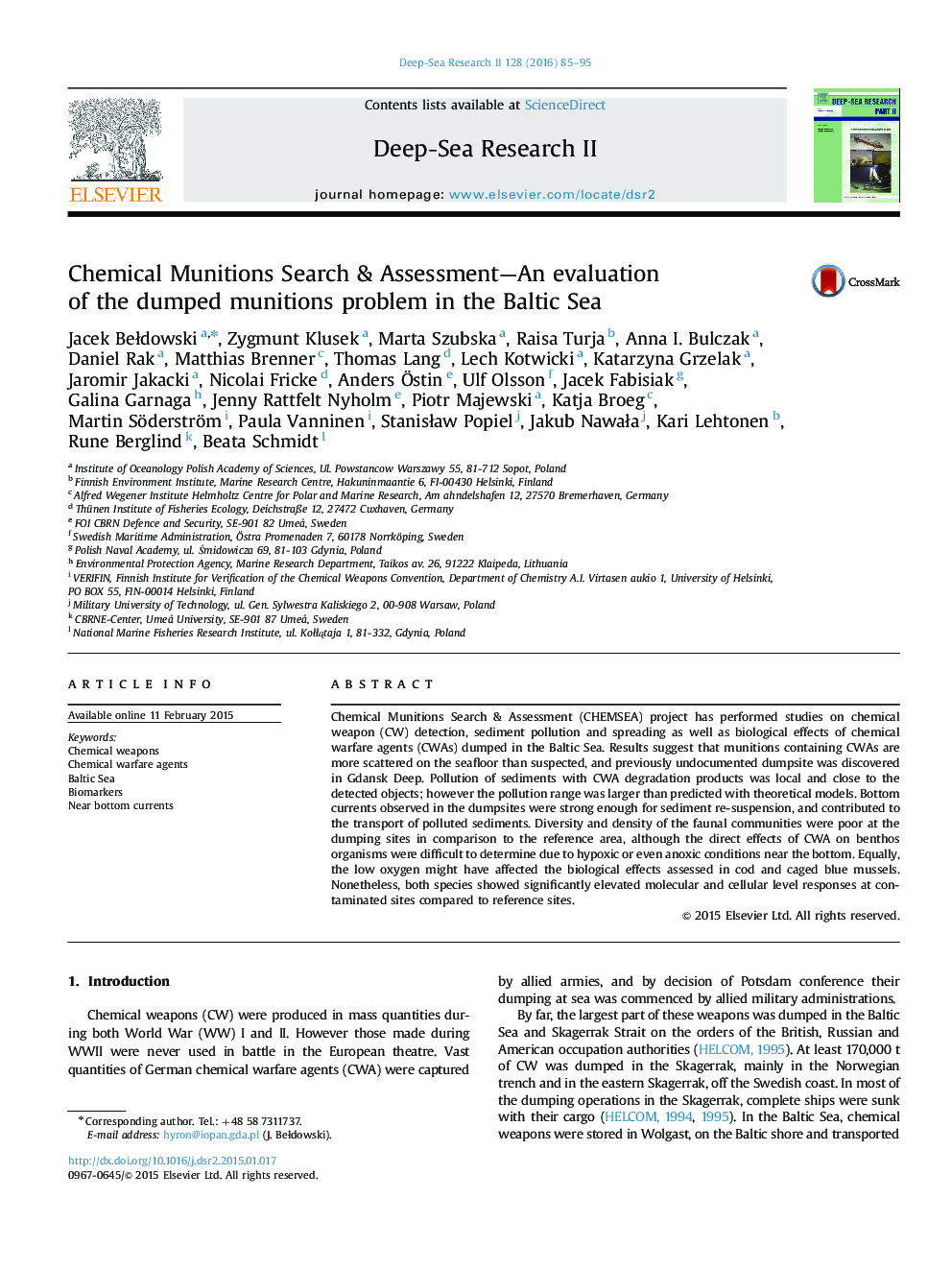| Article ID | Journal | Published Year | Pages | File Type |
|---|---|---|---|---|
| 4536146 | Deep Sea Research Part II: Topical Studies in Oceanography | 2016 | 11 Pages |
Chemical Munitions Search & Assessment (CHEMSEA) project has performed studies on chemical weapon (CW) detection, sediment pollution and spreading as well as biological effects of chemical warfare agents (CWAs) dumped in the Baltic Sea. Results suggest that munitions containing CWAs are more scattered on the seafloor than suspected, and previously undocumented dumpsite was discovered in Gdansk Deep. Pollution of sediments with CWA degradation products was local and close to the detected objects; however the pollution range was larger than predicted with theoretical models. Bottom currents observed in the dumpsites were strong enough for sediment re-suspension, and contributed to the transport of polluted sediments. Diversity and density of the faunal communities were poor at the dumping sites in comparison to the reference area, although the direct effects of CWA on benthos organisms were difficult to determine due to hypoxic or even anoxic conditions near the bottom. Equally, the low oxygen might have affected the biological effects assessed in cod and caged blue mussels. Nonetheless, both species showed significantly elevated molecular and cellular level responses at contaminated sites compared to reference sites.
